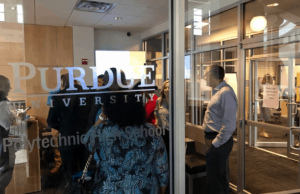10 Trends in K-12 Online Learning

On Monday I outlined 10 reasons that online learning matters. Today my top ten list outlines the big trends in K-12 online learning.
1. Districts. The most important trend in K-12 online learning is the speed with which school districts are adopting the strategy to improve the quality and array of options, to control costs, and to build sustainability. Districts are becoming providers and partnering with providers. (See A District Guide to Online Learning, Q&A With a Rural Superintendent, Oregon School District Shows Success With Individualized Online Learning)
2. Course Choice. As districts introduce online options more students are gaining the ability to ‘self blend’ their high school experiences. John Bailey’s recent House testimony outlines how Utah and Louisiana have expanded access to individual online courses.
Legislators and advocates [in Utah] drew upon Digital Learning Now!’s 10 Elements of High Quality Digital Learning to develop a policy that drives choice to the course level where students can select courses offered by multiple public and private providers throughout the state. The law allows dollars to follow students to the course of their choice.
3. Blended Learning. Online learning content and strategies are showing up in classrooms nationwide. Digital content is replacing textbooks and much of it was initially used in formal or informal learning online.
Flex academies (online learning with onsite support) are popping up everywhere (See Nexus Lansing: A New High School Experience; AdvancePath Boosts Utica Grad Rates; 10 Reasons Every District Should Open a Flex School; Flex Schools Personalize, Enhance and Accelerate Learning; iPrep: The Miami Flex.)
4. Object-Oriented Content. Providers are adding learning objects (tutorials, teachlets) to core curriculum to provide additional real time support (e.g., Apex Tutorials, Connections Teachlets).
Adaptive learning is one of the most important developments in education (e.g., i-Ready, Dreambox, Reasoning Mind). It has been adopted by blended models but not all online providers.
5.Bundled Platforms. Connections and K12 are marketing their comprehensive learning and school management platform. Some bundles like Edgenuity (formerly e2020) have been updated and there are a few new comprehensive platforms with content including FlipSwitch, and Vschoolz.
6. Competency-Based Learning. Online and blended learning have paved the way for systems where students show what they know to progress to the next level. Individual pacing is inherent in many online models–that’s why iNACOL (the online learning association) is the leading advocate of competency-based learning. (See CompetenyWorks.)
7. Performance-Based Funding. Florida, Utah, and Louisiana base a portion of funding for online learning on successful completion. In John Bailey’s House testimony he notes that Utah’s law “funds success rather than just seat time. A pay for performance element allows online-course providers to receive 50 percent of the state’s per-pupil funds for a given online course up front and the remaining 50 percent only when a student successfully completes the course.”
In a recent paper, Funding Students, Options, and Achievement, we recommended that a small portion of funding for all students be used to create incentives for completion and achievement.
8. College Credit Opportunities. As recently noted, online learning should make it possible for every U.S. high school student to have access to every Advanced Placement course as well as a range of dual enrollment opportunities.
Reynoldsburg high school academies (Columbus, Ohio) use MOOCs, online AP, and onsite community college courses to expand opportunities to earn college credit.
9. Parent Groups. It is common for full time online schools to create or support local communities to provide student and family support and curriculum extensions. There are a handful of parent groups like the Treasure Valley Academy Coop in Boise where parents can share custodial and extracurricular responsibilities. Arizona Virtual Academy has established numerous community relationships with groups and organizations (YMCAs, etc.) where full time or part time blended learning is taking place.
10. Pushback. While districts are developing online learning programs (#1), they are actively opposing the development and expansion of online charter schools like the Illinois moratorium.
The benefit of this (self-interested) opposition will be more rigorous authorization, more transparency, and better growth measures.
With our friends at iNACOL, we’re writing a paper about the myths and realities of K-12 online learning. We hope to address common misconceptions, address the realities of what needs to improve, and recommend productive policies. If you have questions or concerns about online learning, let us know and we’ll try to address them in the paper. We’d also be happy to highlight productive strategies and share representative stories.
Disclosures: Connections, K12, Curriculum Associates, Dreambox and Digital Learning Now! are Getting Smart Advocacy Partners. Tom is an iNACOL and AdvancePath director.






Tom Vander Ark
Cynthia J. Sikon~Williams provided some Ohio examples of parent groups (#9):
I have worked with quite a few co-ops in Ohio. We have had a long standing Co-op in the Cincinnati area that partnered with some traditional homeschoolers and a Christian Church in that region... What I see trending in my region of the state is specific interest clubs. For example, my little one just joined a running club this year of eSchoolers that will be running in a 5K this June. We also have the Coalitions Bowling event. As a eSchool Family we have also joined an eSchool Book club that meets monthly... Our school Ohio Virtual Academy did hold a Cleveland Area Co-op this year for four weeks that we joined and she loved. The school provided teachers and parents that partnered and taught other classes too.
Tom Vander Ark
Jennifer Hughlett Roy commented via email (on #9): I am seeing a growing trend with military families having coops on base. I know of one here in TX and also one in OK.